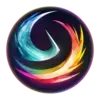Notice: Due to the hack in February and other recent issues XeggeX is shutting down and filing for insolvency. More information and legal contacts will be provided soon.
Max Supply: 0
Circulation: 99,986,241,177.97
Market Cap: $197,587,360,565
Listing Date:
2022-03-18, 09:31:42
Network:
XRP Main Chain
Asset Type:
Coin
Links
Social
Primary Markets (0 active)
Total Market Volume: ~$0
Liquidity Pools (0 Active)
Total Pool Liquidity: ~$0
| Market | Volume |
|---|
Hot Wallets
Deposit
Block #97262220 @ 0.22 min ago
Balance: 18.04222600
Updated: 0.13 min ago
Withdraw
Block #97262220 @ 0.22 min ago
Balance: 239.45720000
Updated: 0.12 min ago
About XRPL
XRP is the native digital asset of the Ripple platform. Ripple aims to connect banks and payment providers to provide a frictionless experience for sending and receiving money globally. It was originally designed as a day-to-day payment system, to speed up and reduce the costs of transactions, and provide a mediatory currency for exchanges and conversions with minimum commission.Software developer Ryan Fugger founded the original Ripple project in 2004. The core idea behind the protocol was a peer-to-peer trust network of financial relations that would replace banks. Based on the premise that money is simply a bank’s promise of value, he aimed to create a monetary system where the promise of an individual held just as much weight. His concept was launched in 2005 as RipplePay, a financial service allowing users to extend credit lines to friends and family and make secure payments in traditional and online currencies.In 2012, Jed McCaleb, an American programmer and entrepreneur, along with Chris Larsen, an angel investor and startup executive, approached Ryan with a digital currency idea. Jed had been working on a digital currency system in which transactions were verified by consensus among members of the network. After discussions, Ryan handed over the reins to Jed and Chris, who co-founded the corporation OpenCoin, to develop the Ripple protocol (RTXP) and the Ripple payment and exchange network. The company later changed its name to Ripple Labs.The Ripple platform is similar to Ethereum in that it has its a native currency (XRP) but is also open-source, allowing users to build their own assets and products on top of the existing platform. Ripple uses its proprietary patented technology, the ‘Ripple protocol consensus algorithm’ (RPCA), to verify transactions. It is argued that XRP is not technically a cryptocurrency because it is controlled by one company and transactions are processed by its network of approved validators.Ripple released its XRP token in January 2013. Like traditional cryptocurrencies, it is based on a public chain of cryptographic signatures. The company initially set the supply of XRP at 100 billion of which 80 billion tokens were allocated to the company and 20 billion were given to the three founders. On June 13, 2016, Ripple obtained a virtual currency license from the New York State Department of Financial Services, making it the fourth company with a BitLicense.XRP enhances Ripple’s software by acting as a bridge between traditional fiat currencies, providing liquidity and speeding up cross-border transactions; however, it is not essential to the network and doesn’t have to be used.RippleNet is what Ripple calls the network of financial institutions using its products. There are three core segments: xCurrent for processing payments, xRapid to source liquidity, and xVia to connect to the network and send payments.
Stable Connection


